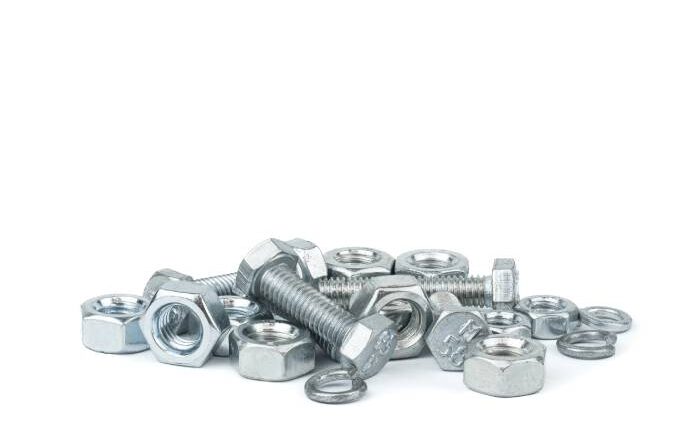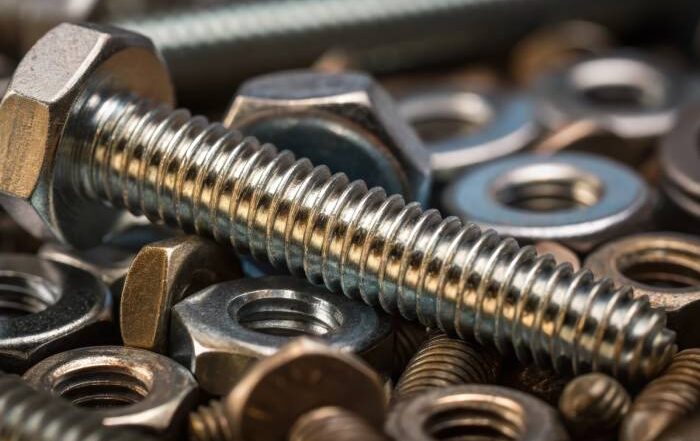
There are two main types of stainless steel, namely 304 stainless steel and 316 stainless steel. 304 stainless steel boasts a chromium-nickel content and low carbon, and is known for being one of the most widely used austenitic stainless steels in the world.
Some of its common applications include auto molding and trim and wheel covers. You will also often find that 304 stainless steel is used in the manufacture of kitchen equipment, hose clamps, exhaust manifolds, stainless hardware, storage tanks as well as pressurenuts vessels and piping.
The Benefits of 304 Stainless Steel
The main benefit of 304 stainless steel is its durability. It also allows for ease of fabrication and cleaning, meaning that it is simple to maintain. 304 stainless steel provides corrosion resistance, along with superior resistance to oxidation. Finally, it is available in a wide range of finishes and appearances.
What Is the Difference Between 304 and 316 Stainless Steel?
The main difference between 304 stainless steel and 316 stainless steel is that 316 stainless steel provides better resistance to corrosion, hence the reason why it is utilized in more outdoor applications, such as outdoor electrical enclosures. 316 stainless steel can also be used in marine applications, such as nuts and bolts that will be used in or near water for long periods of time.
The make-up of 304 and 316 stainless steel is different too. 304 stainless steel is comprised of 18% chromium and 8% nickel, while 316 contains 16% chromium, 10% nickel, and 2% molybdenum. It is the added molybdenum that provides 316 stainless steel with its superior corrosion resistance properties.
Common Applications of 304 Stainless Steel Fasteners
304 stainless steel fasteners are widely recognized for their strength, durability, and excellent resistance to corrosion, making them a highly popular choice across a variety of industries. From construction to food processing, the versatility and reliability of 304 stainless steel make it the go-to solution for environments that demand long-lasting performance. Below, we dive deeper into the common applications of 304 stainless steel fasteners.
Construction and Architecture
In the construction industry, 304 stainless steel fasteners play a pivotal role in the durability and aesthetics of buildings and structures. These fasteners are used extensively for securing components in architectural structures, including curtain walls, railings, and exterior trim. Their resistance to weathering, oxidation, and rust ensures that they remain secure and reliable for extended periods, even when exposed to outdoor elements.
Beyond their durability, 304 stainless steel fasteners also offer an aesthetic advantage. Their smooth finish complements modern architectural designs, adding a sleek and polished look to structures. Whether used in commercial buildings, residential complexes, or public infrastructure, these fasteners contribute to the overall structural integrity of the project while maintaining the visual appeal of the finished product.
Automotive and Transportation
In the automotive and transportation industries, 304 stainless steel fasteners are indispensable. They are commonly found in applications such as vehicle trim, wheel covers, hose clamps, and exhaust systems. The ability of 304 stainless steel to withstand exposure to heat, chemicals, and moisture makes it an excellent choice for parts that require high durability, particularly in harsh operating environments.
The fasteners’ corrosion resistance is especially important for automotive applications, where parts are constantly exposed to the elements, road salts, and various chemicals. By using 304 stainless steel fasteners, manufacturers ensure that the components maintain their structural integrity and appearance over time, contributing to the overall longevity of the vehicle.
Food and Beverage Industry
The food and beverage industry relies heavily on 304 stainless steel fasteners due to the strict hygiene and cleanliness standards that need to be met. These fasteners are commonly used in the manufacturing of commercial kitchen equipment, storage tanks, and food processing machinery. The non-reactive properties of 304 stainless steel make it ideal for applications where cleanliness and sanitation are top priorities.
304 stainless steel fasteners are resistant to corrosion caused by exposure to moisture and food acids, making them suitable for use in environments where frequent cleaning is required. Whether in food production lines, commercial kitchens, or storage tanks, 304 stainless steel fasteners help ensure that these systems remain functional, durable, and easy to maintain.
Plumbing and Water Handling Systems
In plumbing and water handling systems, 304 stainless steel fasteners are an excellent choice due to their corrosion resistance in wet environments. These fasteners are commonly used in applications such as piping supports, valves, pressure vessels, and water storage solutions. The resistance to rust and degradation from prolonged exposure to water makes them a reliable option for both residential and industrial plumbing systems.
Whether used in municipal water systems, agricultural irrigation systems, or residential plumbing installations, 304 stainless steel fasteners ensure that the systems remain secure and reliable, even when exposed to moisture for extended periods. Their durability contributes to minimizing the need for frequent repairs or replacements, making them an efficient and cost-effective choice.
Key Advantages of Using 304 Stainless Steel Fasteners
304 stainless steel fasteners provide several important advantages that contribute to their widespread use across a range of industries:
- Corrosion Resistance: The high chromium and nickel content in 304 stainless steel provides excellent resistance to oxidation and corrosion. This is especially beneficial in applications exposed to moisture, chemicals, and outdoor elements, ensuring the fasteners maintain their strength and integrity for a long period.
- Strength and Durability: These fasteners are robust and reliable, offering high mechanical strength. This makes them suitable for heavy-duty applications that require a strong and secure fastening solution, even under stress and extreme temperatures.
- Ease of Fabrication and Maintenance: 304 stainless steel fasteners are easy to fabricate and assemble, which streamlines the manufacturing process. They are also easy to maintain, requiring minimal cleaning to retain their corrosion-resistant properties.
- Versatile Finishes: 304 stainless steel fasteners come in a variety of finishes, from polished to matte, offering flexibility in design and aesthetic applications. This makes them suitable for industries where appearance is just as important as functionality.
How Do 304 Stainless Steel Fasteners Compare to 316?
While both 304 and 316 stainless steel fasteners offer impressive performance, they differ in certain key aspects that make them suitable for different applications:
- 304 Stainless Steel: 304 fasteners are ideal for general-purpose applications, especially in indoor or less corrosive environments. Their corrosion resistance is adequate for most standard uses, such as automotive, kitchenware, and architectural components.
- 316 Stainless Steel: The addition of molybdenum to 316 stainless steel enhances its corrosion resistance, especially in harsh environments like those exposed to saltwater or chemicals. This makes 316 the preferred choice for coastal construction, offshore projects, and marine hardware.
304 stainless steel fasteners offer a cost-effective solution for a variety of general-purpose applications. While 316 stainless steel may be more suitable for extreme conditions, 304 stainless steel remains an excellent choice for many industries due to its corrosion resistance, durability, and aesthetic appeal.
Choosing the Right Stainless Steel Fastener with Marsh Fasteners
Selecting the correct fastener for your project is crucial for ensuring the durability and functionality of your application. At Marsh Fasteners, we offer a comprehensive range of 304 stainless steel fasteners tailored to your specific needs. Whether you need standard sizes or custom specifications, our expert team is here to provide guidance and help you choose the perfect fasteners for your project.
Contact us today to explore our wide selection of 304 stainless steel fasteners and discuss your fastening requirements. We’re committed to providing high-quality products and expert advice to ensure your projects are a success.
For both 304 and 316 stainless steel fasteners, do not hesitate to get in touch with the team at Marsh Fasteners. Shop now!



